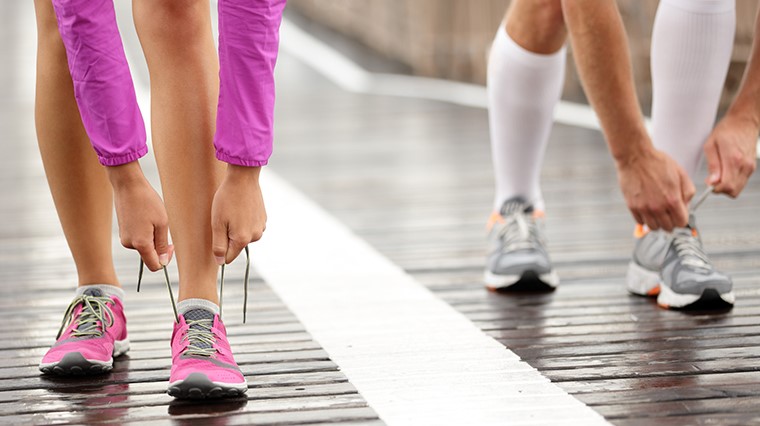Let’s talk running shoes! Of course, there are many types available for different feet, terrain, distance, etc. We will compare the two most common and differing shoe designs.
Common Types of Running Shoes

The standard running shoe has an elevated and cushioned heel. These shoes provide a softer midsole that creates a cushioning effect and attenuates shock as our feet strike the ground. Therefore, there is reduced impact and load on our joints. However, the thicker sole of these shoes can also limit the bottom of our feet, or the “plantar” region of our foot from feeling the ground itself, potentially causing poor proprioceptive sensation. The minimalist running shoe (and the more extreme option is barefoot running) is the popular flip side to the standard running shoe. There is a biomechanical shift to the forefoot with plantar pressure upon foot strike that occurs with minimalist running. This forefoot strike does help to improve running efficiency, and also reduces the load placed on the knees and hips. Positively, this then promotes shorter strides and increased frequency of turnover. The negative aspect of minimalist running means that the calf and Achilles tendon take on more load, which will often lead to tightness/stiffness and/or tendon tears in these regions. Also, due to the lack of cushion in a minimalist shoe, studies have found an increased rate of metatarsal stress fractures within the foot itself.
Our Recommendation
So- this begs the question- what type of shoe is the best to start off with? (especially for a new runner!)
We would recommend a partial minimalist shoe! This shoe has been suggested to reduce impact and injury risk. The middle is often a good place to start, and one can tailor his or her needs from there. We often recommend switching in and out of a couple pairs of shoes for runners who run multiple times a week. This allows the joints to load differently and keeps the lower extremity muscles from excessive fatiguing. Also, please note that the shoe is only as good as the runner’s form. The way your stride hits the ground, no matter the shoe, can affect how the body is able to tolerate running. Come on by for a running evaluation if you have questions and see what running shoes are right for you!

